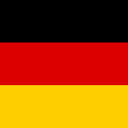HOW MUCH MAGNETIZING FORCE DOES IT TAKE TO SATURATE (FULLY MAGNETIZE) MAGNETS?
To reach the maximum energy output of a magnet, it should be saturated, that is ,magnetized fully even though the magnet may be later stabilized either thermally or using a “knockdown” (or calibrating) field.
The magnetizing force required to saturate a magnet depends on the coercivity of the magnetic material and to a lesser extent, physical characteristics of the magnet and components to which it may be fastened during the magnetizing.
The general rule is that to saturate a magnet, one must apply a peak field of between 2 and 2.5 times the intrinsic coercivity. For example, an Hci of 20,000 oersteds will require at least 40,000 oersteds to saturate.
In the case of magnets attached to conductive fixtures, eddy currents are established in the material that set up a reverse magnetic field during the extremely short magnetizing pulse. This prevents the magnetizing flux from fully penetrating the conductor, perhaps even the magnet, and reduces the field the magnet sees and sometimes also the flux path (direction of the flux) in the magnet. In these cases, it is necessary for the equipment manufacturer to adjust the LC (inductance capacitance ratio) of the magnetizing circuit to extend the magnetizing pulse width. An extended pulse generates more heat which slows the production magnetizing rate. So a careful compromise must be reached.
REQUIRED MAGNETIZING FIELDS
Bonded rare earth magnets pose another problem. The magnetic powder is separated with non-magnetic binder which affects the penetration of flux through the magnet during the pulse and requires a higher magnetic field than one would expect from the rule above. For example, MQP-B powder with an Hci of 10,000 Oersteds requires at least 30,000 Oersteds to saturate. Most magnet manufacturers should be able to provide you with a curve of peak applied field versus percent of saturation for induction, Hci or percent of maximum flux output.
Approximate required magnetizing fields for various magnet types to reach at least 98% of maximum output are listed below. These are general and affected by fixturing and LC circuit, etc.
| MATERIAL | OERSTEDS | kA/m |
|---|---|---|
|
Alnico 5, 6, 8 and 9
|
3,000 – 7,000
|
239 – 557
|
|
Ceramic (Hard Ferrite)
|
10,000 – 12,000
|
796 – 955
|
|
Neodymium-iron-boron, motor grade
|
35,000 – 50,000
|
2,790 – 3,980
|
|
Neodymium-iron-boron, high energy grade
|
30,000 – 40,000
|
2,390 – 3,180
|
|
Neodymium-iron-boron, most bonded
|
30,000 – 40,000
|
2,390 – 3,180
|
|
Neodymium-iron-boron, high temp bonded
|
35,000 – 60,000
|
2,790 – 4,780
|
|
SmCo 1-5
|
30,000 – 45,000
|
2,390 – 3,580
|
|
SmCo 2-17
|
40,000 – 50,000
|
3,180 – 3,980
|
|
SmCo low Hci bonded grade
|
25,000 – 30,000
|
1,990 – 2,390
|
|
SmCo high temperature grade
|
45,000 – 55,000
|
3,580 – 4,375
|
Accuracy Statement: While we make every effort to ensure that the information contained in these documents is complete and accurate, we make no warranty regarding this. We appreciate your input, so contact us regarding corrections, additions and suggestions for improvement.

